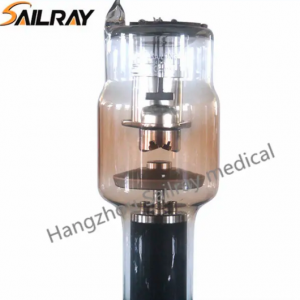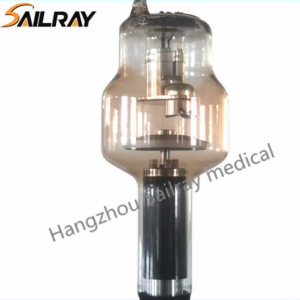What is a rotating anode? This question often comes up when discussing the technical aspects of X-ray tubes. In this article, we will delve deeper into the concept of rotating anode X-ray tubes and explore their implications in medical imaging.
X-ray imaging has revolutionized the field of medicine by allowing doctors to visualize internal structures without performing invasive surgery. X-ray tubes are at the heart of the technology and generate the high-energy X-rays required for this non-invasive imaging technique. The rotating anode is a key component of these X-ray tubes, increasing their efficiency and longevity.
So, what exactly is a rotating anode? Simply put, it is a disc-shaped target made of high atomic number materials such as tungsten or molybdenum. The target rotates rapidly during X-ray generation, allowing for more efficient heat dissipation and increased X-ray output.
The main purpose of rotating anodes is to overcome the limitations of fixed anodes. In conventional fixed-anode X-ray tubes, the heat generated during X-ray generation is limited to a small spot on the anode. This concentrated heat rapidly degrades the anode, limiting the power and duration of the X-ray output. Rotating anodes solve this problem by spreading the heat load over a larger area, thereby minimizing anode wear and extending tube life.
The design of rotating anodes involves complex engineering. The anode is usually made of tungsten because it has a high melting point and can withstand the intense heat generated when X-rays are produced. In addition, the anode is coated with a thin layer of refractory material, such as graphite or molybdenum, to improve its thermal conductivity.
The rotation of the anode is achieved using a rotor and bearings. A rotor driven by an electric motor spins the anode at high speed, typically about 3,000 to 10,000 revolutions per minute. Bearings ensure smooth and stable rotation, any imbalance or vibration can negatively impact image quality.
The advantages of rotating anode X-ray tubes are many. First, the rotating anode has a larger surface area that can better dissipate heat, thereby extending exposure times and increasing X-ray output. This means shorter exam times and greater patient comfort. Additionally, the durability of the rotating anode allows the X-ray tube to withstand repeated and prolonged use, making it ideal for high-volume medical facilities.
Additionally, the ability to focus the X-ray beam onto a smaller area of the anode increases the resolution and clarity of the resulting images. This is particularly important in diagnostic imaging, where precise visualization of anatomical structures is crucial. The enhanced heat dissipation capabilities of the rotating anode facilitate continuous imaging without cooling interruptions, further improving workflow efficiency.
In summary, rotating anode X-ray tubes revolutionized the field of medical imaging. With their advanced engineering and superior heat dissipation properties, these tubes offer many advantages over traditional fixed anode tubes. From increased X-ray output and longer tube life to improved image resolution, rotating anode X-ray tubes have become an indispensable tool in modern healthcare.
Post time: Nov-10-2023



